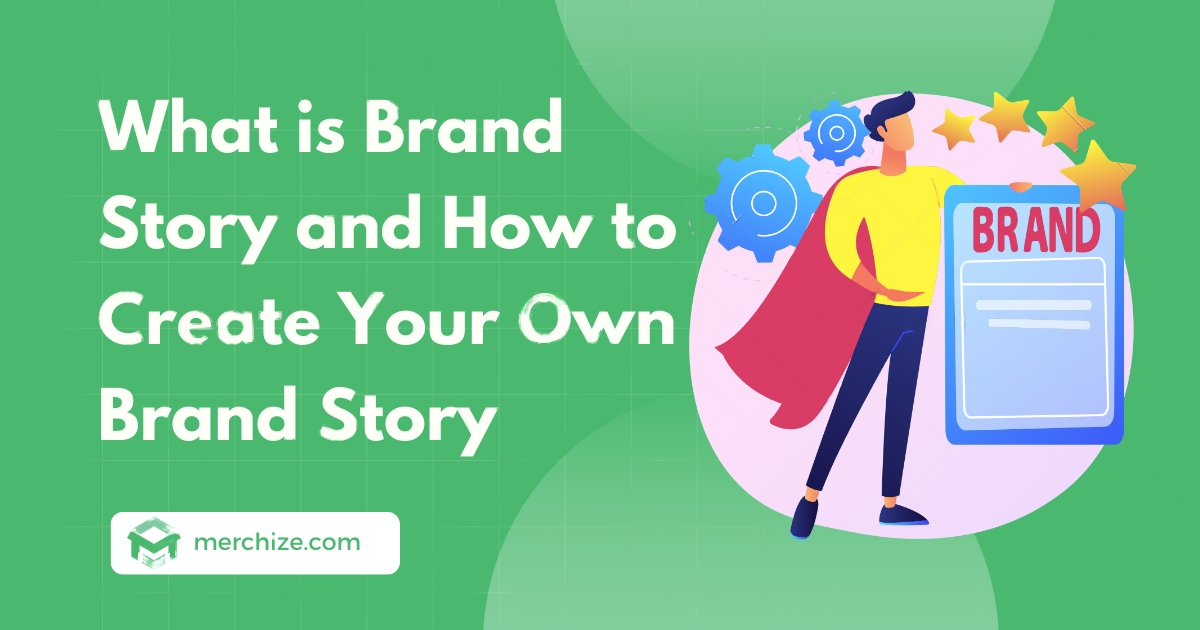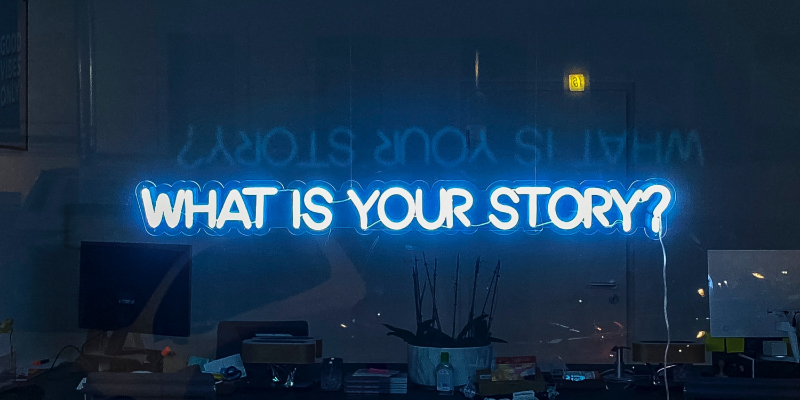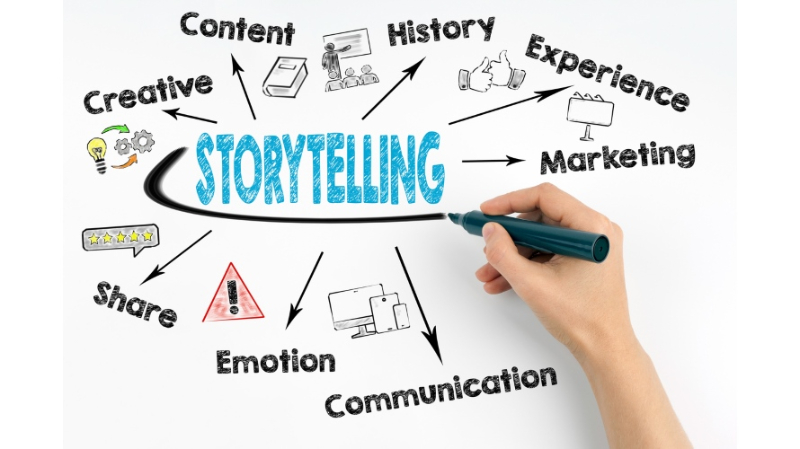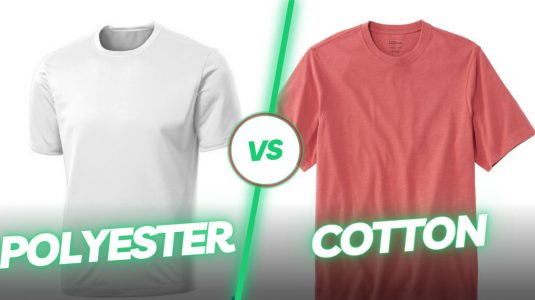Contents
When talking about building a brand, most people think about the visual representation of branding like logos, brand identity, brand colors, and so on. People usually forget the underlying yet impactful part of a brand – brand story. So what is a brand story, how can it help to elevate your brand, and how you and your business can create your own convincing and compelling brand story?
What is a brand story?
Branding is all about communicating your brand’s messages and values to the targeted audience. And visual communication is not the sole way to create a successful brand. Other than images, graphics, and colors, one of the most effective ways to achieve this goal is through storytelling or a brand story.
So what is a brand story exactly?
In simple terms, a brand story is the story of how your business came to be and how that beginning motivates and drives your business forward until today. This story essentially involves not only the factual events and information but also the lessons, humans, and emotions behind a brand.
A good brand story will help your brand to communicate clearly with your customers about the missions of your brand as well as evoke positive emotions associated with your brand and make them remember and feel connected with your brand.
How brand story differ from the traditional approach?
- Visual identity vs. narratives
When sitting down to strategize the branding plan, most people are likely to branch out on the key visual identity elements like logos, color schemes, and typography, or other elements like taglines and slogans.
On the other hand, a brand story is more about creating a compelling narrative that expresses the brand’s history, values, mission, and purpose, which requires both visuals and words to form.
- Focus on humans and emotions rather than features and benefits
A good brand story, just like other compelling stories, must build upon characters and events. It goes beyond just a description of the company or products and how they can bring value and solve customer’s problems.
Brand story usually reveals the people, their values, struggles, and triumphs behind the brand. It could be the founders, staff, or even customers. This way, a brand’s voice will be humanized and familiarized with the target audience, fostering mutual understanding, emotional connection, and a sense of authenticity and relevancy.
So instead of remembering a brand only for its facade of products and services, a brand can connect with customers as a true living and growing entity.
Why should you use a brand story?
Stories have always been a great tool for effective communication. However, not all brands minds to tell their story. If you are among those who aren’t familiar with the concept of brand story, here are a few reasons why you should start paying attention to create a compelling brand story:
- Brand story makes your brand human and relatable. There is no better way than telling a story where customers can see where you’re coming from, what challenges you have faced, and what are your purposes. With the language of storytelling, you will be able to show an authentic, human side of the brand and engage with your audience.
- Brand story also offers a shortcut to deliver your messages and set your brand apart from competitors. They can easily remember your brand, and understand your purpose and your brand’s unique position in the market through a small digestible story.
- Brand story also helps to build trust and credibility for your brand. With a simple story, you will be able to establish a reliable narrative that lays the foundation for customers’ trust and support.
>>> If you’re participating in the print on demand business, let’s Merchize help you with the best tools for strengthening your branding with our branding services and products.
How to craft a persuasive brand story?
Creating a brand story requires no further than your writing and storytelling skills. However, if you don’t know where to start, here are some useful tips to help you create a compelling brand story.
Find your story’s conflict
There is no story without conflict. Romeo and Juliet wouldn’t have ended up the most famous love story of all time if Juliet and Romeo hadn’t gone against their families’ will, followed their wishes, and parted in peace.
The same is also true for telling a brand story. You need a conflict to create tension and drama in your story. Here are a few ways you can create conflict for your brand story:
Conflicts against industry norms: Conflicts usually arise when a brand seeks to challenge the traditional norms in the industry. A company might want to introduce innovative technologies, business models, or new approaches that go against the industry status quo.
Take Testla for example. The company has challenged the domination of fuel-powered vehicles in the automotive industry and the old perception that electric cars aren’t as powerful as traditional fuel cars. By making superpower electric vehicles, Tesla was able to disrupt the industry and make electric cars cool.
- Conflicts against competitors:
Competition always happens in any market. It can also be the source of inspiration for some great brand stories.
Netflix vs Blockbuster has become one of the well-known origin brand stories. In the beginning, both Netflix and Blockbuster competed as DVD rental service providers. Back then, Blockbuster was considered the leader of the industry while Netflix was a small start-up. In 2000, Blockbuster refused to buy Netflix at the price of $35 million, just to be overthrown by the same company they declined 10 years later. Netflix was able to turn the table around as it quickly transitioned into an online streaming service rather than sticking to the traditional rental model.
- Conflicts in regard to environmental/social issues
Serving the right causes and fighting against unfairness and environmental and social issues can also be the reason for many brands to explain their existence.
Patagonia sets a great example for this. Yvon Chouinard, the founder of this famous outdoor clothing brand, started out the brand with a passion for outdoor exploration and a deep concern for the environment. Since then, Patagonia has developed its brand based on this initial foundation.
Above are just a few examples of how you can identify a conflict for the story of your brand. The conflict for your brand story could vary widely, depending on each company’s original materials and stories.
Identity a hero/main character for your story
As mentioned earlier, an important characteristic of a good brand story is the human connection. In order to do this, just simply add a hero – the main character to your story. In most cases, the heroes are usually the founders of the brand or the people who make significant changes to a brand’s story, mission, and business strategy. The hero will represent the brand and how it overcame challenges to make its place in the market.
In the case of Apple, Steve Jobs is definitely the face, the hero of the brand. Steve Jobs was the father of the brand. However, due to some internal conflict, he was ousted from the board in 1985 and then returned in 1996, revived the brand with his visions and leadership, and helped it grow into one of the biggest tech companies today.
Steve Jobs’ characteristics like his favor of design simplicity, particular commitment to user experience, and ambition to change and disrupt the industries have reshaped Apple as we know it today.
Add an emotional punch to your story
Evoking emotion through your brand story is the short way to bridge the gap between you and your audience.
To add emotion to your story, you can tell a relatable story. It could be how your brand aims to solve customers’ real problems, showing your understanding and empathy with your customer’s emotions. It could also be about how the hero of the brand story overcame challenges to gain success. This hero can be the leader of the brand, the staff, or even the customers themselves. This way, you can create an authentic narrative that evokes genuine emotional responses.
Tell your honest story
Unlike traditional story-telling, the brand story is not a work of fiction. It should originate from a real experience and a real story. Of course, it takes effort to pick up details, highlight the conflict, and channel the tone and voice to thread a cohesive and charming narrative. Still, your brand story should build up on real materials. Or else, you are deceiving your customers with an unreliable story.
Keep the story simple and concise
Each company and each brand will have to go through long journeys with all sorts of ups and downs to succeed and thrive in the market. However, it is not recommended to turn your brand story into a long story about every event and challenge your brand has experienced.
Keep it short and concise. Simplify your story, cut all the details that are relevant, and distill them into one or two key events that play significant roles in showing your brand’s values and missions.
Make sure that the story can be told within one or two minutes or even shorter. If writing it down, you should keep it around 200 to 300 words. The shorter the story, the easier for your audience to remember the story.
It would be a waste if your carefully crafted brand story was tucked away somewhere on your website and never looked back again. Instead, you should share and spread your story across the organization and integrate it into your marketing materials.
For example, you can use the story in your company’s company profile presentation or introduction video. These materials be used by the sales team when presenting your company to clients and business partners or human resource team to share with new employees during the onboarding process.
Conclusion
A brand story isn’t just about recounting facts and figures; it’s a narrative that delves into the heart and soul of your business. It encapsulates the journey, the values, the people, and the emotions behind your brand.
In an era where authenticity and connection are key, a well-crafted brand story can be your brand’s most potent asset, resonating with your audience, fostering loyalty, and ultimately driving your business forward. So, don’t underestimate the power of your brand story; it’s not just a tale—it’s your brand’s heart and soul.








